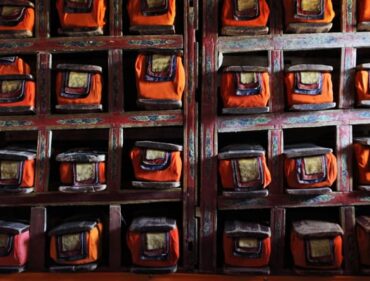Blog: Finding Power in Powerlessness
By Isa Gucciardi, Ph.D.
The roots of anger, and indeed, the roots of many potentially destructive emotions, lie in powerlessness. Most people would not choose destructive emotions as a way to gain control over circumstances if they could learn to tolerate not having control over the situations around them.
It is important to be gentle with yourself and have self-compassion as you learn to be present with your anger. It is easier to be compassionate with yourself if you can trust your ability to take responsibility for any way you may have harmed yourself or another with anger. In this way, you won’t look for the easy “out,” but instead learn everything you have to learn from the way you have related to your anger. In this way, you can understand the roots of your anger more fully, make amends where needed, and honor the information contained in your anger.
In order to develop this tolerance, it is important to change the way you view powerlessness. People often respond to feelings of powerlessness by using negative emotions to take control of the situation. This rejection of powerlessness is understandable. But we must learn to make friends with it. If we reject it, we reject the most vulnerable parts of ourselves, and this leaves us exposed. If we use the power of any of the destructive emotions such as anger, hatred, or vengeance to take us away from our powerlessness, we become even more vulnerable to the potential of generating harm for ourselves. However, if we learn to see our powerlessness as something we must protect and support, we take steps to effectively minimize potential harm coming to us.
In their book, Love Your Enemies, Robert Thurman and Sharon Salzberg discuss the Buddhist concepts of the Inner Enemy and the Outer Enemy. We are all more familiar with the Outer Enemy. This is the person or circumstance that we experience as harming, or that makes us feel powerless. We are less familiar with the Inner Enemy. In this context, the Inner Enemy would be the choice to use vengeance, hatred, or another negative emotion to pull us away from the experience of powerlessness.
We generally tend to see our powerlessness as the enemy. We should really be seeing our hatred or desire for vengeance as the enemy. This does not mean that we reject it. It means that we open to the negative emotion, follow it to its roots, and allow space to experience what is there, even if it is our own sense of powerlessness. In this way, we develop the ability to stand firm in the face of powerlessness and we protect ourselves from the poisonous effect of the Inner Enemy.
The following discussion about the Inner Enemy is from my book, Coming to Peace:
His Holiness the Dalai Lama is a master at disempowering the inner enemy. As the spiritual leader of Tibet, he has been honing this practice of the core tenets of a peaceful existence described in this chapter since he was two years old. I witnessed his commitment to peace in May 2001, when he gave a teaching on the Heart Sutra at the Shoreline Theatre in Mountain View, California. When a critical audience member questioned the Dalai Lama’s decision not to go to war against the Chinese government upon its invasion of his homeland, he responded simply and honestly by stating, “My heart could not tolerate this.”
Through his response, the Dalai Lama was bringing to light the importance of putting forth the effort required of each of us to maintain a peaceful and compassionate response to aggression. Some might find it foolish of the Dalai Lama to refuse to fight fire with fire to take back Tibet. But it is through this refusal to turn violent with his thoughts, words, or actions that he remains true to himself and the Buddhist practice of disempowering the Inner Enemy (hatred in response to the Chinese army’s aggression) and refusal to make an Outer Enemy of “the other” (China).
By disarming our inner enemy, we are given the opportunity to root out even the subtlest forms of negativity that may be lurking in the deepest levels of our being. When we hold anger in our hearts, we dole it out to everyone we come into contact with, in some way or another. The inner enemy severs us from others and ourselves, filling our life with loneliness and misery. But the tear in the fabric of connectedness that occurs when we harm ourselves with feelings of anger, fear, and intolerance are entirely within our power to repair. In doing so, we re-establish peace within ourselves and with others – even if the external relationship ends up looking completely different than we had expected.
The Dalai Lama did not allow the fabric of connectedness to tear between him and those behind the misery of his fellow Tibetans, because he is so dedicated to quelling his inner enemy and generating peace. To this day, I have not heard of him uttering a hateful word against China, even though millions of people whose wellbeing he is charged with overseeing have been displaced, marginalized, tortured, and killed by Chinese authorities.
One can imagine that the Dalai Lama must feel a great sense of powerlessness in the face of these circumstances, yet he resists any urge toward trying to remedy it by resorting to the expression of negative emotions such as vengeance.
I would like to emphasize that I am not suggesting that you reject any negative emotions that may come up in your relationships with other people or circumstances. I am suggesting that you follow them to their root as they come up, and learn what they have to teach you. If this inquiry brings you into contact with your powerlessness, sit down and learn from that. Find out what makes you feel powerless, and seek to change your relationship to it – first, by protecting it from the choice toward a negative emotion as a solution to it, and second, by approaching it with compassion.
ENJOYING THE STREAM OF CONSCIOUSNESS BLOG? SIGN UP FOR FREE UPDATES!



